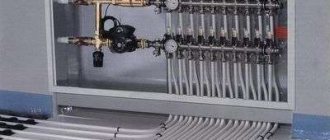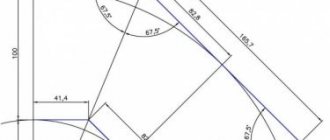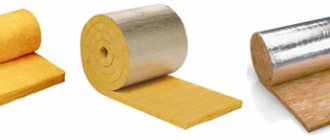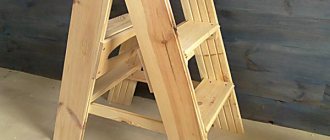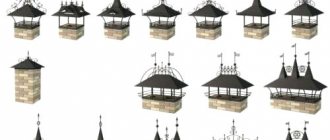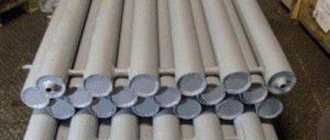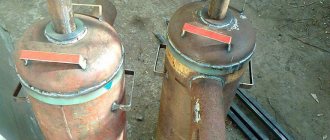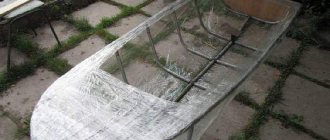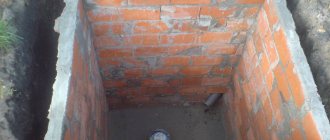Heating of technical premises requires inexpensive and easy-to-use heating devices. For premises such as warehouses, workshops, garages and production halls, heating registers made of smooth pipes are simply irreplaceable. They are very helpful in rooms with increased requirements for cleanliness, as they are easily cleaned of dust and all kinds of contaminants.
When deciding to install heating registers, it is necessary to carefully study their technical characteristics and application features. The simplest configurations of these devices can be made independently; more complex models of ornate shapes require factory manufacturing conditions. One way or another, to ensure optimal temperature conditions, the parameters of the registers must be determined on the basis of thermal engineering calculations.
Advantages and disadvantages
The advantages include simple design and simple calculations, availability of materials.
All this together allows you to make heating registers with your own hands. The next positive point is that most of the heat is transferred using radiant energy, and it is perceived by a person as more pleasant.
Heating registers are usually located in utility, production, and auxiliary rooms
The next plus is the smooth surface, which makes cleaning easy.
Excellent quality - compatibility with any systems - both natural and forced circulation.
DIY making
To do it yourself, you will need a welding machine and experience working with it
. To assemble the register yourself, you need to be at least a good welder. For homemade radiators, you don’t need calculations and drawings; you need high-quality welding.
One of the popular models is the “samovar”. This is a portable register filled with oil or antifreeze. A heating element operating from 220 V is inserted into the lower pipe, and an expander is welded into the upper pipe. As long as there is electricity, this system will successfully heat the room.
There are many heating systems, all have their pros and cons. In comparison with the performance of a bimetallic battery, the registers lose in many ways. But due to their low price and good heat transfer, they will be in demand in the heating engineering market for a long time.
Selecting material for registers
The next parameter that must be taken into account when choosing a register is the material of its manufacture.
It is rare to see heating registers made from a profile pipe - most often steel products with a round cross-section are used for this.
Currently, several materials are used to produce registers - metal, aluminum or bimetallic pipes.
The difference between them lies in the calculated heat transfer and service life:
Steel heating registers made of profile pipe or round section. They are characterized by ease of manufacture and low cost. Disadvantage: surface rusting
When choosing, special attention should be paid to the quality of welds;
Aluminum. They are extremely rare, since welding aluminum heating registers requires special equipment
But they have better thermal conductivity. There is virtually no heat loss;
Bimetallic. They are made from a special type of heating pipes. They have a core made of steel. To increase the heating area, the design has copper or aluminum plate heat exchangers. All bimetallic heating registers are characterized by a small pipe diameter - up to 50 mm. Therefore, they are more often used to organize heat supply in residential buildings and small industrial and commercial premises.
Advantages of steel heating registers and their disadvantages
Steel heating has a number of advantages:
- When working, you can realize any individual drawing.
- Not only water, but also heated steam can serve as a heat carrier.
- Easy to connect to the system.
- Its high heat output makes it an excellent option for installation in a large building.
- Low cost.
Video
Homemade heating battery (register)
There are also disadvantages. These include:
- Low heat transfer rates.
- Fear of corrosion.
- Unpresentable appearance.
- Such products require regular painting.
Bimetallic batteries
These radiators are made of a steel core inside and aluminum fins outside. The high strength of the batteries is achieved by the presence of steel inside. Most models are tested under pressure of 60 and even 150 atmospheres. They also have good chemical stability.
The high heat transfer of bimetallic radiators is due to aluminum fins with a significant surface area. Due to the small cross-section of the channels inside the sections, a high speed of coolant movement is ensured and there is no need for frequent flushing. The main disadvantage of bimetallic radiators is their high cost. Thus, a ten-section bimetallic battery will cost several times more than other options.
Gas heating
A double-circuit boiler is a very convenient device
Gas heating is one of the best today. Natural gas is an economical, efficient, safe, environmentally friendly fuel.
Gas and electric heating are similar in their efficiency, safety and a number of other advantages. But a detailed examination reveals its specific shortcomings.
A comparison with electric boilers reveals the following. Electric boilers are more expensive than gas boilers, but in some cases their performance is higher, control is more convenient and simpler, and their use is safer. An electric boiler only requires a power connection, while gas analogues additionally require the purchase of a mounted burner and regular cleaning of burning and soot. Electric boilers are easy to install, which is another advantage.
Gas heating requires permission to install it, prepare a site for its installation, lay out the system for it, connect and install all the necessary equipment, which in total is quite expensive. But the monthly heating fee will be lower than for electricity, although it also depends on the efficiency of the purchased gas system. Otherwise, the gas system has the disadvantages of a water system within the intra-house space, as a system that uses a coolant.
When comparing gas heating with heating by direct electric heaters, the advantages of electric heating are the absence of installation permission, much lower capital investments, and ease of installation and maintenance. The disadvantage is a more expensive source of energy - electric.
Advantages
This type of heat exchanger has the following advantages:
- They have a large heat transfer area with small sizes;
- Easy to use;
- Easy to clean;
- Fireproof;
- Heaters equipped with heating elements consume little electricity;
- Can be used for drying linen, clothes or towels;
- Suitable for use in premises with increased fire safety requirements and increased sanitary standards: in hospitals, workshops, warehouses, shopping pavilions, administrative buildings, hangars, etc.
Calculation of registers from smooth pipes
Steel heating registers are easy to make with your own hands. The cost of such a heating system will depend on who will cook them. If you own the welding technique yourself, the option is the most low-budget; if the welder needs to be paid, there will not be much difference in cost with inexpensive aluminum ones.
Diameters, as mentioned, range from 32 mm to 100-150 mm. Large pipe sizes lead to an increase in system volume. When starting and accelerating the system, this is a minus - it will take quite some time until the coolant heats up. When working, a large volume is rather a plus: milder conditions for the boiler. On the other hand, with a large amount of coolant, it is difficult to regulate the temperature.
Table of heat transfer of steel pipes of different diameters for different operating conditions of the system (click on the picture to enlarge its size)
The distance between two pipes in the register should not be small: this reduces heat transfer. Therefore, they are located at a distance of no less than 1.5 radii. The number of rows and register length depend on the required power, as well as the diameter of the selected pipes. In the general case (for central Russia, for rooms with average thermal insulation and a ceiling height of 3 m), it can be calculated by the heat transfer of a meter of steel pipe. These values are given in the table. Using it you can find the size and number of registers by area of the room.
Heat transfer of one meter of steel pipes of different diameters - to calculate the heating register by area
To calculate the heat losses of a room, there are averaged data on the thermal power of a linear meter of steel pipe. You can use them for standard conditions. If the system operates at other temperatures, adjustments may need to be made up or down.
If these tables did not help you, you can calculate the register using the formula.
Formula for calculating registers made of steel pipes
By substituting the appropriate values, you will find the heat transfer of one pipe under your conditions. The heat transfer of all subsequent ones (second or more) will be slightly less. The found value must be multiplied by 0.9. So you will calculate and be able to make a register from smooth pipes with your own hands.
Types of registers
The most common type is registers made of smooth pipes, and most often electric-welded steel ones. Diameters - from 32 mm to 100 mm, sometimes up to 150 mm. They are made of two types - serpentine and register. Moreover, register ones can have two types of connection: thread and column. A thread is when the jumpers through which coolant flows from one pipe to another are installed either on the right or on the left. It turns out that the coolant sequentially runs around all the pipes, that is, the connection is sequential. With a column connection, all horizontal sections are connected to each other at both ends. In this case, the movement of the coolant is parallel.
Types of registers made of smooth pipes
Any type of registers can be used for any type of system: with one-pipe and two-pipe wiring, with vertical and horizontal supply type. With any system, greater heat transfer will occur when the supply is connected to the upper pipe.
When used in systems with natural circulation, it is necessary to maintain a slight slope towards the movement of the coolant of the order of 0.5 cm per meter of pipe. Such a small slope is explained by the large diameter (low hydraulic resistance).
This is a serpentine heating register
These products are made not only from round, but also from square pipes. They are practically no different, only they are more difficult to work with, and the hydraulic resistance is a little higher. But the advantages of this design include more compact dimensions with the same volume of coolant.
Square tube registers
There are also registers made of pipes with fins. In this case, the area of contact between the metal and the air increases, and heat transfer increases. In fact, builders still install just such heating devices in some budget new buildings: the well-known “pipe with fins.” Although they don’t look the best, they warm rooms well.
A register with plates will have a much higher heat transfer
If you insert a heating element into any register, you can get a combined heating device. It can be separate, not connected to the system, or used as an additional heat source. If the radiator is insulated with heating only from the heating element, it is necessary to install an expansion tank at the top point (10% of the total coolant volume). When heated by a domestic boiler, the expansion tank is usually built into the structure. If it is not there (often happens in solid fuel boilers), then in this case it is necessary to install an expansion tank. If the material for the registers is steel, then the tank needs a closed type.
Electric heating can be useful in the most severe cold weather, when the boiler power is not enough. Also, this option can help out in the off-season, when there is no point in loading a long-burning solid fuel boiler and running the system to full speed. You just need to warm up the room a little. This is not possible with solid fuel boilers. And this backup option will help keep you warm in the off-season.
By adding a heating element to the register and installing an expansion tank, we get a combined heating system
Type of heating boiler. Calculation of generated power
The boiler can be: gas, electric, solid fuel, combined, etc. The choice of boiler often depends on the fuel that prevails in the region of residence.
- A gas boiler
. To install such a boiler, a separate room (boiler room) was previously required. Now this only applies to boilers with an open combustion chamber. This type of heating boiler is most common in gasified areas. - Electric boiler
. It has not become widespread due to the high cost of electricity and problems with connecting power. - Solid fuel boiler
. It is not very popular given the relative availability of fuel. This is due to a number of inconveniences during its operation. For example, it is necessary to fire the fire several times during the day. Also, the heat transfer mode is cyclical. The use of this type of boiler is facilitated (by reducing the number of fireboxes) due to the use of fuel with a high calorific value or a thermal cylinder, which increases the combustion time due to controlled air supply; this can also be done through water heat accumulators connected to the heating system.
Determining parameters when calculating power
- Area of the heated room (S);
- Specific boiler power per room area of 10 m², taking into account the climatic conditions of the region (Wsp).
Existing generally accepted values of specific power depending on the climatic zone:
- Northern regions: Wsp = 1.5 – 2.0 kW;
- Central regions: Wud = 1.2 – 1.5 kW;
- Southern regions: Wsp = 0.7 – 0.9 kW;
Formula for calculating boiler power
Wcat = S. Wud/10
Taking for the convenience of calculations the average value of Wsp per unit (1 kW), we obtain the above-mentioned value of 10 kW per 100 m² of heated area.
The type of water heating depends on the size of the house. A natural circulation system is suitable for an area of no more than 100 m².
In other cases, forced circulation of the coolant (hot water) is used through circulation pumps.
Register structure
For the manufacture of heating registers, smooth carbon steel pipes with a round cross-section, as well as square and rectangular ones, are used. Their combined use is possible. Stainless and galvanized steel, aluminum, copper, and brass can also be good materials for registers, but they are much more expensive and more difficult to process with your own hands.
Heating registers made of steel profile pipes are considered the simplest to make. They can be made in two main configurations: sectional type and coil type (S-shaped).
In a sectional type register, several sections of profiled metal with capped ends are arranged in parallel and connected to each other by round tubes of smaller cross-section. The jumpers ensure that the rows of the device are filled with coolant from both sides simultaneously. Moreover, the closer to the edge the transition pipes are installed, the higher the heat transfer of the device.
In a coil register, the liquid passes in an S-shape through rows of profile pipes, gradually cooling. To add rigidity to the structure, additional blind jumpers are used. Horizontal rows are connected in pairs by a snake using tubes of a smaller cross-section, like in sectional models, or sections of the main profile. The latter option is preferable due to lower hydraulic resistance and greater heat transfer.
Connecting pipes are made with threads or welding. The most effective option for connecting a heating device is a top-down diagram. For low models and in the case of forced circulation of coolant, entry and exit from below may be justified.
The design of the register must include a Mayevsky valve or an automatic air vent. It is located at the end of the top row on a threaded fitting to allow replacement. A prerequisite for installation is to maintain a slope of 0.05% in the direction of coolant movement.
Registers can be either stationary or portable. The former work as elements of a general heating system, the latter perform the task of local heating. The heat source for a separate mobile register is a heating element with a power of 1.5-6 W, mounted in the housing.
In addition to large horizontal registers, small vertical models are also in demand. If you carry out the work carefully, you can get homemade cheap heating radiators from profile pipes that are almost as aesthetically pleasing as modern sectional radiators.
In some cases, steel registers can be a good addition to the heating units already installed in the room. Despite the lower heat transfer than radiators of a similar size, their use may be more appropriate due to their lower cost.
High vertical registers are very convenient for high rooms or near high window openings. They can successfully fit into the interiors of rooms with unusual design solutions. By experimenting a little with color and shape, you can get a creative decoration from simple heating devices.
Calculation of the required number of registers in the house
When choosing registers for heating, you need to pay special attention to the pipes used in the design and their diameter. The most suitable option for this parameter is considered to be a size of 31-32 mm
Experts do not recommend installing registers from pipes whose diameter exceeds 82 mm. This is due to the fact that heating boilers will not be able to provide the required amount of coolant.
In terms of heat transfer, aluminum radiators are better than steel ones.
For each individual building, it is necessary to very accurately determine the number of pipes and their diameter in the register. Therefore, installing these heating systems in a house requires taking into account the following factors:
- The number of doors and windows in the building.
- Wall thickness.
- Materials from which windows and doors are made.
To calculate the required number of pipes, one main indicator should be taken into account - the heat transfer of 1 m of pipeline. The cost of installing a heating system using radiators and registers is not much different. The differences in price depend only on the number of joints, the cost of welding work and pipes, and the size of the devices. In multi-story and one-story buildings, it is best to use registers for lower pipe routing.
Installation of registers made of steel: welded pipes with a thread diameter of 100 mm
LOCAL RESOURCE GIVEN GESN 18-03-004-08
| Name | Unit |
| Installation of registers made of steel: welded pipes with a thread diameter of 100 mm | 100 m of register pipes |
| Scope of work | |
| 01. Installation and sealing of brackets with drilling holes. 02. Installation of registers with their connection to pipelines. 03. Thermal test with checking heating devices for heating and adjustment. | |
The price indicates the direct costs of work for the period 2000
(Federal prices), which are calculated based on
2009
. The conversion index to current prices must be applied to this value.
You can go to the pricing page, which is calculated based on the standards of the 2014 edition with additions 1 The basis for using the composition and consumption of materials, machines and labor costs are GESN-2001
| № | Name | Unit Change | Labor costs |
| 1 | Labor costs of construction workers Grade 3.5 | person-hour | 26,05 |
| 2 | Labor costs for drivers (for reference, included in the price of the EV) | person-hour | 0,14 |
| Total labor costs for workers | person-hour | 26,05 | |
| Workers' compensation = 26.05 x 9.07 | Rub. | 236,27 | |
| Payroll for drivers = 11.63 (for calculating invoices and profits) | Rub. | 11,63 | |
We determine the cost of building a house. Price per thirty minutes.
OPERATION OF MACHINES AND MECHANISMS
| № | Cipher | Name | Unit Change | Consumption | Article number Rub. | Total RUB. |
| 1 | 020129 | Tower cranes when working on other types of construction 8 t | mach.-h | 0,02 | 86,4 | 1,73 |
| 2 | 021141 | Truck-mounted cranes when working on other types of construction 10 t | mach.-h | 0,12 | 111,99 | 13,44 |
| 3 | 330206 | Electric drills | mach.-h | 1,02 | 1,95 | 1,99 |
| 4 | 400001 | Flatbed vehicles, load capacity up to 5 tons | mach.-h | 0,84 | 87,17 | 73,22 |
| Total | Rub. | 90,38 | ||||
| № | Cipher | Name | Unit Change | Consumption | Article number Rub. | Total RUB. |
| 1 | 101-0148 | Dowels with calibrated head (loose) 3x68.5 mm | T | 0,00275 | 25425 | 69,92 |
| 2 | 101-0388 | Earth oil paints MA-0115 mummy, red lead | T | 0,00027 | 15119 | 4,08 |
| 3 | 101-0628 | Combined drying oil, grade K-3 | T | 0,00013 | 16950 | 2,20 |
| 4 | 101-1669 | Flax tow | kg | 0,11 | 37,29 | 4,10 |
| 5 | 301-0589 | Heating registers made of steel electric-welded pipes with a thread diameter of 108 mm | m | 100 | 92 | 9 200,00 |
| 6 | 301-1195 | Brackets for attaching radiators to brick and concrete walls, with a bracket length of 131 mm | 100 pieces. | 0,335 | 180,69 | 60,53 |
| 7 | 301-1196 | Brackets for attaching radiators to brick and concrete walls, with a bracket length of 325 mm | 100 pieces. | 0,335 | 187,47 | 62,80 |
| 8 | 402-0002 | Ready-made masonry cement mortar grade 50 | m3 | 0,0067 | 485,9 | 3,26 |
| Total | Rub. | 9 406,90 | ||||
TOTAL BY RESOURCES: 9,497.27 RUB.
TOTAL PRICE: RUB 9,733.55.
Look at the cost of this standard in the 2021 edition open page
Algorithm for performing installation work
The installation of a two-pipe associated heating system is carried out in accordance with a certain algorithm, where the initial stage is the selection of pipe diameters, and the final stage is the installation of a circulator pump.
Calculation of pipeline diameter
There is a scientifically based method of calculation. The cross-section of the pipe is selected based on the volume of coolant passing through the pipe per unit time. The calculation starts from the distant radiator using the formula:
G=3600×Q/(c×Δt), (1)
where: G – water consumption for heating the house (kg/h);
Q is the thermal power required for heating (kW);
c – heat capacity of water (4.187 kJ/kg×°C);
Δt is the temperature difference between the hot and cold coolant, taken equal to 20 °C.
Next, calculate the cross-section of the pipes using the formula:
S=GV/(3600×v), (2)
where: S is the cross-sectional area of the pipe (m2);
GV – volumetric water flow (m3/h);
v is the speed of water movement, is in the range of 0.3−0.7 m/s.
The resulting figure is the cross-section; based on it, the internal diameter of the pipeline is selected.
This calculation is carried out for all radiators up to the boiler.
When calculating, you can also rely on the table of the dependence of the internal diameter of the pipe on the thermal load.
Table of dependence of the internal diameter of the pipe on the thermal load
The following guidelines can be taken into account:
- For heat losses of up to 15 kW (150 sq. m.) of area, pipes with a diameter of 20 mm are suitable.
- For losses from 15 to 27 kW (up to 250 square meters), pipes with a diameter of at least 25 mm will be required.
Carrying out calculations using the given formulas or hydraulic tables is a difficult task for the homeowner, so you can rely on the recommended pipe diameters.
The diameter of the pipeline must be the same throughout its entire length to ensure stable operation of the batteries. The recommended minimum internal diameter of pipes is 20 mm.
The following conditions must be met:
- Place pipes under the floor covering to avoid high-rise contours. If this is not possible, then you need to take into account the configuration of the house and strive as much as possible for the same height of pipe laying.
- Pipe material is metal-plastic or polypropylene reinforced with aluminum foil. Such pipes are stronger and will last a long time.
- Radiators are installed bimetallic or steel with a bottom connection system. Such batteries have higher hydraulic resistance, which balances the system. The power of the radiators should be the same throughout the entire area of the house.
- Each battery is equipped with a balancing valve on the return line. It is advisable to install thermostats.
Boiler installation
The room where the boiler is installed must have a height of at least 2.5 m. The volume of the room is recommended from 8 cubic meters. The hot water boiler must be selected depending on the area of the heated house. Boiler power for heating is 10 kW. m is equal to 1 kW. Based on this, the power for the entire system is selected.
The boiler piping consists of a set of shut-off valves; it is installed in several places:
- On the make-up pipe.
- On both sides of the pump.
- At the expansion tank.
- On the pipes coming from the boiler.
Mainline pulling
When installing the associated heating system distribution line, the following must be taken into account:
- The outlet branch of the main line must be located below the supply branch.
- The heat supply and heat removal pipes must be parallel to each other.
- The expansion tank must be installed above the heating boiler.
- Valves for draining water must be installed on the connecting radiators. It is recommended to install a thermostatic head on each radiator to ensure a comfortable temperature.
- When laying the pipeline, right angles are excluded to avoid the occurrence of air locks in the system.
- The expansion tank must be installed in a heated room.
- All diameters of pipes, fittings and taps must match each other. You cannot install pipes of different diameters in an attempt to save money. The water pressure in the system will be disrupted.
Installing a circulation pump
It is unreasonable to rely on natural circulation, since there are 10 or more batteries in the associated heating system. Gravity will not be able to work without forced pressure. The circulation pump is installed on the return branch near the boiler. The pump is installed using a bypass and three valves. It is recommended to install a filter.
A circulation pump is installed on each floor
The associated heating system is installed in one-story and two-story buildings. In two-story buildings, during installation you need to take into account some nuances:
- A circulation pump is installed on each floor. If a breakdown occurs on one floor, the heating will work fully on the other.
- For each floor it is recommended to install according to a separate scheme.
Registers with heater
You can also find registers with a heating element - heating element. Such devices are used for installation in rooms where laying communications is difficult or impossible.
The power of the built-in heating device ranges from 1.6 to 6 kW. Operating voltage - 220 V, current - single-phase alternating, 50 Hz.
It is also possible to equip it with a circulation pump for more efficient heat transfer due to better coolant circulation.
When operating in autonomous mode, the device is filled with antifreeze, while the heating element maintains a surface temperature of 80° C.
When operating as part of a central or general heating system at home, the heater compensates for the drop in coolant temperature in the system or turns off.
Flat-plate heat exchanger
A popular option, which is used both for stoves in the bathhouse and for the home. They are the simplest to manufacture, the surface is easy to clean from soot accumulations, installation is possible both vertically and horizontally, and the efficiency is relatively high.
A flat boiler can have a high volume, so you can take hot water for washing directly from the heating system. An expansion tank with an increased linear size is installed, into which water constantly flows after the level drops below critical. This option is quite convenient and helps solve several problems at once, but there is also a condition - the room temperature in winter should not drop to minus.
Key disadvantage: a sharp decrease in heat transfer from the furnace walls. This type of heat exchanger is made in the shape of the letter “P” and is installed around the perimeter of the firebox, bypassing the door. As a result, it turns out that the temperature of the external walls is quite low, as a result, warming up the room takes much longer. This is critical only if the stove is installed in a bathhouse; for residential buildings, where the stove is constantly heated, increasing the warm-up time by several hours does not play any role.
Thus, when choosing a flat boiler, think about how you can increase the heating rate. One option is to enlarge the heater and place it directly above the firebox. Second option: using a metal chimney for heating, increasing its length.
Features and Specifications
Registers have some unique properties:
- Due to intensive heat exchange with the environment, they can heat a room of significant volume with fairly modest and compact dimensions of the device itself;
- Does not require high-tech production; electric welding and an angle grinder with a cutting disc are sufficient;
- It is made of fairly cheap material - steel, cast iron or stainless steel;
- Withstands significant pressure (10 kgf/m²) and is capable of working not only with water, oil and other liquids, but also with steam;
- It is possible to manufacture according to customer drawings, independently produce and use various configurations, plugs, coating materials and fittings;
- The price of the device, taking into account effective heat transfer, is significantly lower than that of other heat exchangers.
How to make a homemade heat exchanger
Multi-pipe register
The shape of a heat exchanger for heating made by yourself can be different. The most common option is a register made of several steel or copper pipes, but plate-type examples are also used.
The temperature in the combustion zone is very high, especially when burning coal. Therefore, increased demands are placed on the metal from which the heat exchanger elements will be made, the rationality of its design and the quality of the welds.
Materials for production
An example of using cast iron radiators as a heat exchanger in a brick oven
The task of water heat exchangers for heating is to ensure optimal heat transfer, and in this process the degree of thermal conductivity of the metal is important. For example, a steel pipe conducts heat 7 times less than a copper pipe. Therefore, with the same pipe diameter, to transfer the same amount of heat, you will need 25 meters of steel pipe instead of 3.5 meters of copper.
Copper heat exchangers are the most economical to operate, but also expensive. Heat exchangers made of steel pipes with a diameter of at least 32 mm are considered more affordable for self-production.
If you plan to heat the stove with coal, it is better to install a heat exchanger made of cast iron. This metal is stronger, and the walls of the device will not burn out for a long time.
Heat exchanger power calculation
It is quite difficult to calculate in advance the power of the heat exchanger for a heating system. To do this, you need to take into account too many factors: pipe diameter, coil length, thermal conductivity of the metal, fuel combustion temperature, coolant circulation rate, etc. The real ability of the heat exchanger to cope with its functions will become clear only after the heating system starts operating.
When calculating, you can estimate that 1 meter of pipe with a diameter of 50 mm, serving as a heat exchanger, will provide 1 kW of thermal power.
You can take as an example any well-known boiler model and, in accordance with its parameters, make your own homemade heat exchanger.
Design Features
A heat exchanger for water heating of a house, welded from smooth-walled pipes, is called a register. It looks like a kind of “grid” and is the most popular form of homemade heat exchanger. In addition to this design, simpler devices are also made in the form of a rectangular or cylindrical tank. The main thing is that the surface area for heat exchange is as large as possible.
When making a heat exchanger with your own hands, several conditions must be observed:
- the width of the internal voids in the heat exchanger must be at least 5 mm, otherwise the water in it may boil;
- the thickness of the pipe walls must be at least 3 mm so that the metal does not burn through;
- a gap of 10–15 mm between the heat exchanger and the walls of the firebox should compensate for the expansion of the metal when heated.
Installation features
The heat exchanger is installed inside the furnace during its laying
The easiest way is to install the heat exchanger simultaneously with the construction of the furnace. If you install it in an old stove, you will have to dismantle part of its brickwork.
- A tubular heat exchanger is installed on the prepared furnace foundation directly into the furnace cavity.
- When further laying rows of bricks, space is left for the inlet and outlet pipes of the device.
- After completing the laying of the stove, connect the heat exchanger to the heating system, fill the system with water and test fire the stove.
The video material offers useful tips for making a heat exchanger yourself:
So far we have only talked about heat exchangers in a water heating system
Let's pay attention to other areas of their application.
Design Features
Heating registers are used to a greater extent in industrial workshops, technical rooms, and, in addition, in apartments and private houses. Registers are common in many places with high sanitary requirements, for example, in medical organizations and schools.
According to the type of system, heating registers are divided into collapsible and coil devices:
- In sectional registers, pipes are connected to each other by jumpers of the smallest diameter - this type of connection is determined mainly by the ease of installation. The distance between the register pipes is calculated using the formula D+50 mm, where D is the pipe diameter. If the rule is followed, mutual irradiation of the pipes will be minimized, as a result, heat transfer increases.
- In coil-type registers, pipes are combined from the end using an outlet whose diameter is equal to the diameter of the pipes. The slight increase in the cost of the product is offset by the huge surface area, and as a result, by the greater efficiency of the heating device. In addition, the coil register has less hydraulic resistance than the sectional one, which makes it possible to use less powerful, but more economical and cheaper pumps in the heating system.
Pipe end caps can be either thin, convex or elliptical. It is recommended to use such plugs in systems with the highest coolant pressure, and, in addition, for decorating purposes, in order to add the most interesting appearance to the device. If necessary, the outer sector of the register is additionally equipped with a fitting for a degassing valve.
There is another variation - an independent register with a heating element . Equipment of this type does not require connection to a heating system, since the coolant is heated by electricity using an integrated heating element. During the design of such registers, the power of the heating element is selected according to the section of the device plane: overheating can provoke an excessive increase and leakage of coolant through the emergency valve. With low power of the heating element, the efficiency of the device will be lower than its possible capabilities.
The outer segment of the independent register is integrally equipped with a fitting, which is initially used to fill the coolant inside, and then used to connect an emergency valve or expansion tank - and in this case it is used to compensate for the expansion of the coolant during heating.
Typology of heating registers
Depending on the design, heating registers are divided into two types:
- Sectional. This type of heating product consists of several parallel smooth pipes with plugs, which are connected to each other by short pipes of smaller diameter. Sections can be made from smooth pipes of different diameters. The register inlet can be threaded or flanged. Short transition pipes should be located as close to the ends of the pipe as possible, this affects the amount of heat transferred.
- Serpentine. This type of registers consists of sections of smooth pipe, which are connected to each other by arcs. In this type of registers, heat transfer is significantly improved, since the entire surface of the pipe is involved in heating. In addition, the design of coil registers eliminates the presence of transition sections, which significantly reduces pressure drops within the system.
Features of device operation
If you plan to use copper radiators in your heating system, you must comply with certain requirements and rules regarding not only installation, but also the operation process. For example, manufacturers do not advise installing several copper and steel devices simultaneously along the flow of the working fluid, as this can lead to a certain electrochemical reaction that can destroy the entire system.
Note! If you cannot refuse this combined option, then be sure to use brass fittings for the connection. Today, these are sold in almost any specialized store, the assortment is huge, and the cost is quite affordable.
It is also undesirable to install copper devices in those lines that may contain small abrasive particles - the latter will, over time, “undermine” the material and sooner or later lead to wear of the radiators.
Finally, do not install such batteries if the operating fluid is very hard or highly acidic. Although some of these difficulties can be solved by installing additional special filters.
Video - Installing a copper battery
Heater design calculation
First you need to calculate the required heating power for a specific room.
According to the rules, such a thermal calculation should be done taking into account:
- area and orientation of external walls (in the southern sunny direction or not);
- cubic capacity of the heated room;
- the level of maximum possible negative temperatures in the region;
- degree of thermal insulation of walls facing the street;
- the presence of another heated room below and/or above;
- quantities, sizes and types of windows installed;
- presence/absence of doors opening directly to the street.
Building codes even recommend taking into account the prevailing wind rose in winter. On the windward side near the wall, heat loss during the winter period will obviously be higher.
Simplified, for a room with a ceiling height of around 2.7 meters, the required thermal power is calculated by multiplying the area of the room by 100 W
If the ceilings in the room are located at a level of 3 meters or higher, then for a simplified calculation the cubic capacity of the heated space should be multiplied by 34 or 41 W. The first coefficient is taken for brick buildings, and the second for reinforced concrete buildings.
Multiplying a couple of numbers is not difficult. But we must be clearly aware that such conditional calculations can be very far from real figures, since there are many nuances here.
The best way out is to order the required calculation from a specialist who will take into account all the parameters of the room. Heat loss occurs through walls, windows, floors, ceilings and even ventilation
To obtain accurate numbers, everything must be taken into account without exception.
Next, you need to calculate the dimensions of the pipes for the heating register. To do this, use the formula:
Q= K* St*dt
letter designations:
- Q – thermal power of the register;
- K – heat transfer coefficient, depends on the pipe material;
- St – heat transfer area (equal to the number PI multiplied by the diameter and length of the pipe);
- dt – thermal pressure.
Accordingly, knowing Q and dt, all that remains is to select the diameter of the pipe and its total length. Then, depending on the design of the register, this pipeline can be divided into several sections, which will subsequently be connected by crossbars. In order not to complicate the calculations, it is better not to take into account the heat transfer from the latter.
The dt figure, in turn, is calculated based on the required room temperature (Tv) and its indicators in the supply (Tp) and return (To) - total dt = (Tp+To)/2-Tv
When connecting pipes with a snake, each subsequent horizontal segment receives approximately 10% less thermal energy than the one located above. Each such section of the register pipeline should be considered as a separate battery. And as the coolant moves through them, it gradually and inevitably cools down, and the heat goes into the room.
Another parameter is the distance between the horizontal sections (main pipes), which reflects the height of the individual pipe. If this gap is made too small, then the heat flows from above and below will begin to overlap, negatively affecting each other.
This figure must be selected so that it is slightly larger than the diameter of the pipe. Then the efficiency of the register will be maximum possible.
More detailed calculations of the power of heating batteries and their quantity can be read here.
Homemade heating registers
By increasing the heat exchange area and the volumetric component of the coolant, of course, it is easier to achieve the desired temperature in the room. Therefore, quite a lot of property owners, taking advantage of the lack of control over heat extraction at each specific point, increase heat removal by manufacturing radiators of non-standard designs.
In fact, this is prohibited, as it is seen as an irrational approach to energy consumption. In practice, they think less about resources than about their own well-being. The following article will introduce you to options for economical garage heating, the contents of which we recommend that you familiarize yourself with. However, closer to the point.
A heating register made by yourself and installed in one of the utility rooms. This is a four-pipe circuit solution with coolant inlet and outlet on one side
Making a heating register with your own hands is a relatively simple task, especially if you have welding skills and have a welding machine at hand. All that remains is to purchase the required quantity of pipes of suitable diameter and sheet metal.
